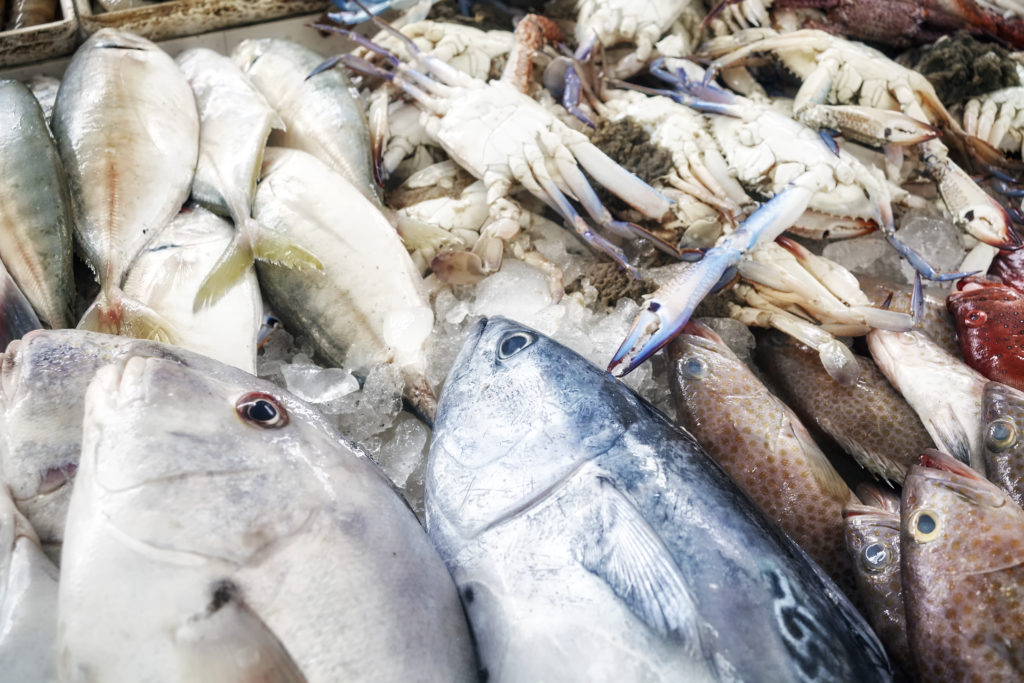The age of heightened food safety concerns has inspired innovation across the board, the latest of which could be a game-changer for seafood safety. A team of scientists in China and Germany designed an artificial material, inspired by chameleon skin, that can detect the freshness of seafood by changing colors. So how does it work?
The material uses molecules found in crystals called luminogens that change color in response to vapors released by microbes as fish spoils. Since the material can change color in response to different stimuli, the researchers believe this discovery can also be used to advance the development of anti-counterfeiting technologies and stretchable electronics.
“A wide variety of luminogens can be used synergistically to fabricate multicolor fluorescent materials without considering their compatibility in one single material matrix,” said Tao Chen, a professor at the Chinese Academy of Sciences in a report published in the journal Cell Reports Physical Science.
To put the material to the test, Tao Chen and other researchers at the Chinese Academy of Sciences, sealed test strips made from the material in boxes at different temperatures with fresh shrimp or fish for over two days. The strip stored with fish at 10 degrees below C remained unchanged from its original red fluorescent color, demonstrating the food was still fresh. The strip stored with seafood at 30 degrees C changed to a vivid green color, indicative of spoilage.
Related: MIT Scientists Develop Food Sensor That Can Detect Spoiled or Contaminated Food
This is not the first artificial material designed to enhance seafood safety. Back in October 2020, a study published in the journal Food Chemistry highlighted a device that can instantly measure the rate of spoilage in Atlantic salmon. However, the chameleon-inspired material can detect spoilage in a wider variety of seafood, having more widespread applications in seafood safety.
Seafood, and other foods with high water content, are ideal breeding grounds for bacteria causing foodborne illness and food poisoning. Improved testing methods could not only be a huge cost saver for the industry, but also help reduce food waste and guarantee safe products for retailers and consumers. But there is also money to made in the seafood safety sector.
According to the new market research report published by MarketsandMarkets, the food safety testing market is worth an estimated $19.5 billion in 2021 with a projected compound annual growth rate (CAGR) of 7.9% to reach $28.6 billion by 2026.
“The meat, poultry and seafood sub-segment by form is estimated to account for the largest market share of food safety testing market over the forecast period,” MarketsandMarkets said in a press release. “The segment is projected to be the fastest-growing due to easy susceptibility to microbial and other contaminations along with the growing number of tests for meat, poultry, seafood products.”
Notably, the report also estimated that the rapid testing technology sub-category will account for the fastest growth in the food safety testing market due to low turnaround time, higher accuracy, sensitivity and ability to test a wide range of contaminants. Once approved and in the hands of food safety agencies, this new color-changing material could be an international leader in seafood safety.












Join or login to leave a comment
JOIN LOGIN